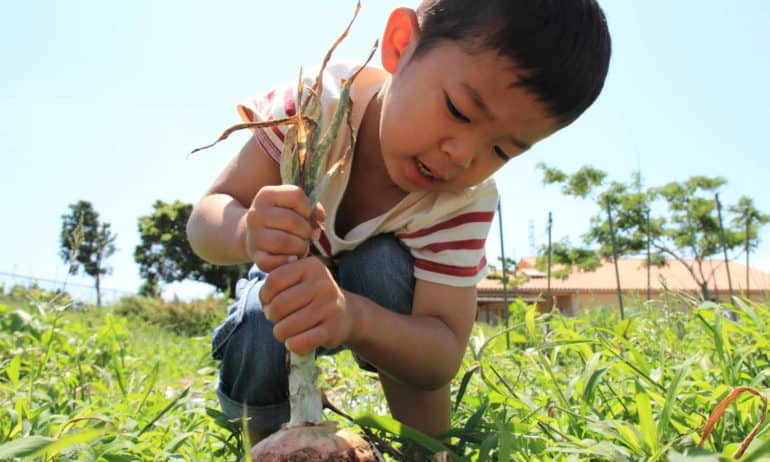October is national Farm-to-School Month in the United States. Thousands of schools, education sites, and organizations across the world, are embracing food education through school gardens, educational farms, and school meals filled with nutritious, local, and seasonal ingredients. It’s time to celebrate farm-to-school organizations from around the globe.
Farm-to-school programs can help bring locally sourced and nutritious food to school cafeterias, improve child nutrition, provide agriculture, health, and nutrition education opportunities to young people, and support local farmers. 20 years ago there were less than 10 farm-to-school programs in the United States, and now, more than 40 percent of schools host programs, reaching over 23 million children.
The National Farm to School Network estimates that for every dollar invested in farm-to-school activities, it can generate more than two dollars in local economic activity, increase children’s fruit and vegetable consumption by more than 40 percent, engage parents in healthier eating at home, reduce food waste at the school, and improve student test scores. Farm-to-school programs can help inspire healthier eating habits in children and these habits can lead to higher educational outcomes. Further, when children learn about the connection between their food and the environment, they often become better stewards of the land. Across the globe, farm-to-school programs are helping foster connections between students, teachers, parents, farmers, and policymakers through activities that support health, nutrition, agriculture, and local economies.
Food Tank is celebrating farm-to-school month by featuring 29 inspiring and innovative farm-to-school programs from around the world. These programs are working to build connections between schools and farmers, making significant impacts on child health, school attendance rates, food security, and farmer livelihoods in many communities. READ MORE
Contributing Author Sarah Axe
October 2018
www.foodtank.com





